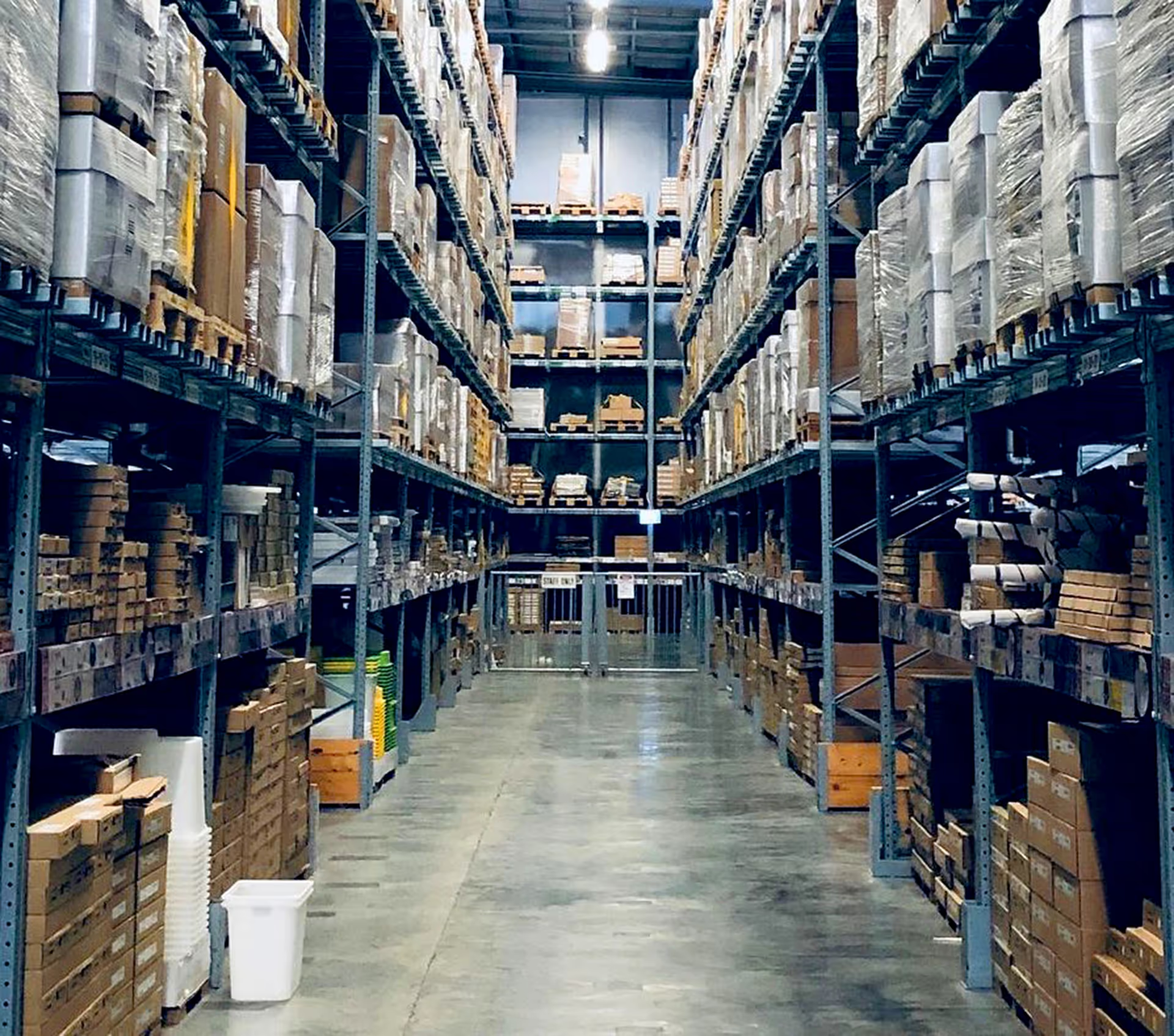Freight shipping and port congestion became an enormous issue when the COVID-19 pandemic hit. While much of the world and society seems to be opening up and returning to normal, many businesses are still struggling with clogged, slow-moving supply chains. This is especially true at the ports, which seem to be struggling with chronic congestion.
We’ve found that many businesses are frustrated and confused about chronic congestion at the ports, but we have answers! Below, we’ll talk about what is causing port congestion, including some more obvious (and not so obvious) reasons. We’ll also talk about some ways you can avoid port congestion and keep your supply chain running smoothly and dependably.
Port Congestion Cause #1: Labor Shortage at Ports
When COVID-19 originally hit, a lot of the economy came to a screeching halt. Consumers cut spending, and business cut orders, which means very few freight orders were coming through at the ports. As a result, many ports laid of workers that weren’t immediately needed. However, demand would quickly return in record amounts, the ports didn’t have enough workers to unload containers, creating port congestion.
That created a cascading effect. There weren’t enough workers to unload containers, which meant there was a delay sending empty containers back to Asia, which meant there weren’t containers for new orders to be shipped, which created more of a delay. The supply chain ended up getting hit in multiple places because there wasn’t enough labor in place.
Unfortunately, fixing the port labor shortage wasn’t as easy as simply rehiring laid off workers or hiring new talent. The pandemic also brought an unprecedented labor shortage that continues to persist, making it even harder to fill vacant port positions. While ports are slowly catching up, finding labor is still a national issue, and one that will continue to contribute to port congestion.
Port Congestion Cause #2: Truck Driver Shortage
The ports aren’t the only industry experience a labor shortage. Freight trucking has been experiencing labor shortages for years, and while there’s a few signs it might be easing, businesses can expect the availability of truck drivers to be persistently low.
Why is there a shortage with truck drivers? Truck driving is a demanding job, so many drivers quit or went on strike. The industry has had difficulty finding new drivers, even with increased driver’s salaries from many companies.
Not only has there been a driver shortage, there has also been a truck shortage. When demand eventually rebounded, there just weren’t enough trucks to meet the demand for orders, creating ever delays and congestion at the ports. When orders are waiting to be put on trucks, they’re taking up space for other orders that needed to be unloaded from incoming containers.
Port Congestion Cause #3: Chassis Shortage
When a container is ready to be unloaded onto a truck, it requires a chassis designed to support sea freight containers while they’re transported on the road. The past few years have brought a severe chassis shortage with it. Part of that are factories having problems sourcing raw materials to make them, while the other is containers waiting on chassis without drivers to take them out.
The shortage has been severe enough that the Federal Maritime Commission (the FMC) approved of a chassis pool that operators in the southern part of the United States can use. This will help to ease some of the shortage issues, but as long ports are congested and there’s a shortage of truck drivers, the chassis issue will still be a lingering problem.
Port Congestion Cause #4 Unprecedented Ecommerce Demand
Ecommerce demand is down from it’s historic 2021 peak, but we’re still experiencing historically high online orders. High ecommerce demand is going to continue to contribute to port congestion because the ports just can’t clear containers fast enough to keep up with orders being placed.
This unprecedented demand is also hitting the 4th Quarter worse than usual. While Q4 shipping always faces delays, they continue to be worse than they’ve been in the past, because shopper demand is still quite strong.
Seasonal Issues that Impact Port Congestion
The four reasons we just discussed are unique to this point in history, but there are other, more predicable causes of port congestion. Businesses can prepare and mitigate some of the expected congestion caused by these seasonal, or occasional, issue:
Holiday Demand (Q4)
Any experience business knows that the holiday demand of Q4 will bring shipping delays and port congestion, regardless of other factors. Businesses often plan and buy for Q4 shopping very early in the year, oftentimes shortly after the end of the previous holiday shopping season.
Labor Strikes

Labor strikes in any industry that are related to the ports will cause port congestion. There have been rumblings of labor disputes within port unions this fall, and as unions continue to enjoy national popularity, this increases the likelihood of port labor unions willing to strike.
The risk of labor strikes isn’t just with port labor, though. Congress just narrowly averted a national rail worker strike, and discontent among rail workers is still high. A strike from rail workers would not only cause enormous port congestion (since train freight is often used to ship from ports), but it would grind an enormous portion of the U.S. supply chain to a halt.
For now, it seems a national strike has been averted, but businesses should continue to keep an eye on the news regarding rail workers, as they continue to be overworked in a time-demanding industry.
Government shutdowns
Federal budget standoffs are not uncommon in the U.S., and they sometimes lead to government shutdowns. While U.S. Customs and its services don’t usually stop under a shutdown, many related agencies are (like the Federal Department of Agriculture). This could lead to delays in clearing certain shipping products, which may cause port delays.
Severe Weather
Finally, severe weather can cause port congestion. If it’s not safe for container ships to unload or for port workers to do their jobs, those services are slowed or stopped until the inclement weather passes. This pause will cause temporary port congestion, though it’s usually quickly cleared.
However, since ports are already dealing with chronic congestion, severe weather may create much longer delays than usual. Businesses should pay special attention to weather around port cities (both the originating port and receiving port) to be able to anticipate potential delays.
When Will Port Congestion End?
Unfortunately, there doesn’t seem to be an end in sight for the chronic conditions causing port congestion. Chassis are still in short supply, as are port workers and truck drivers. Congestion caused by seasonal issues usually have an expected end. For example, Q4 congestion usually lets up towards the end of Q4 and the beginning of Q1.
How Can I Avoid Port Congestion
Since the chronic issues of port congestion will be here for the foreseeable future, the next best thing is trying to avoid port congestion as much as possible. Kanary has been battling port congestion with clients for years, and we’ve cataloged a few tips (some more obvious than others) about how to avoid port congestion.
Order Products Off-Season
Ordering products off-season is a great way to avoid the crunch of demand during busy seasons like Q4. This is especially useful if you are ordering products that aren’t dependent on customer orders (like materials you need to run your business). Businesses regularly make bulk orders in the spring specifically to avoid congestion later in the year.
Use Air Freight
Air freight is a potential option to avoid port congestion, but it’s not a practical solution for all products. Air freight is faster and more dependable, but also much more expensive, and for the majority of products, it’s not worth the cost to exclusively shift to air freight to avoid port congestion.
However, air freight can be a patchwork solution if there is something critical you have to have and can’t have delayed by port congestion. This could be critical components for machinery, packaging in order to sell products, or any other material that is required for your business to operate.
Consider Direct-to-Customer Fulfillment
If you are placing bulk orders for products that will be shipped to a warehouse to fulfill customer orders, you may have an option that cuts out the need to deal with ports at all. Kanary partners with EcommOps for direct fulfillment. Both of our companies operate directly out of China, and EcommOps is able to directly fulfill customer orders from a China warehouse.
Since this style of fulfillment ships directly to customers from China (instead of ordering bulk products that have to go through the ports and customs), business can often avoid port congestion. There’s no container to unload or return, and these orders often use alternative shipping routes. EcommOps (and companies like them) specialize in shipping options that help to avoid port congestion issues and get products to customers quickly.
Direct-to-consumer fulfillment is only for a solution to businesses that bulk order products to fulfill customer orders. For businesses involved in B2C ecommerce, direct-to-consumer fulfillment from a China-based warehouse is something that should be considered.
Trucking vs Rail
Currently, rail is experiencing unusually high levels of congestion, which may give the impression that there is “port congestion” (when it’s really rail delays and threats of labor strikes). It may be in your best interest to consider truck freight, even given the driver and chassis shortage, if rail congestion is severe enough.
This is why it’s important to know all of your shipping options, especially once your products have arrived in the states.
Use Consolidated Shipping
Consolidated shipping is a shipping strategy that aims to make the most efficient use of shipping containers. Generally, instead of shipping an order as soon as it’s complete, products will be held in temporary storage until there is enough to completely fill a shipping container. This could be multiple orders from one supplier, or multiple orders from multiple suppliers.
There’s a lot of benefits to consolidated shipping, but one of the biggest ones is that it makes navigating the ports a much simpler process. When you have a full container (or an FCL container) there’s a special spot in the ports where you can disembark. You won’t have to compete with space with LCL (less-than container loads), which can make port congestion less of an issue.
Consolidated shipping makes clearing customs more straightforward, since you aren’t at the mercy of other, unrelated orders having custom issues. Finally, since you have a dedicated space to unload containers, it’s often easier to get containers onto truck freight to get to their final destination.
Partner with a Sourcing Specialist

Partnering with a sourcing specialist, like Kanary, can help you to avoid a lot of the issues contributing to port congestion. For example, some of our specialties include:
- Coordinating consolidated shipping
- Making sure all customs paperwork is in order so there aren't avoidable delays
- Quickly addressing and resolving customs issues as they arrive
- Coordinating truck freight for when your order arrives
- Choosing the best shipping method from the port, be it truck freight or train
If you’ve been frustrated with trying to navigate slow, clogged ports, we’d love to help. You can reach out to us here, and we’ll take a look at how our services might be able to help you avoid port congestion, as well as making sure your supply chain is as streamlined as possible.
Kanary doesn’t work with all businesses. If we don’t think our services are a good match for what you’re looking for, we can refer you to a sourcing specialist that might be a better fit. We look forward to seeing how we can partner with your business!

.png)


.jpg)





